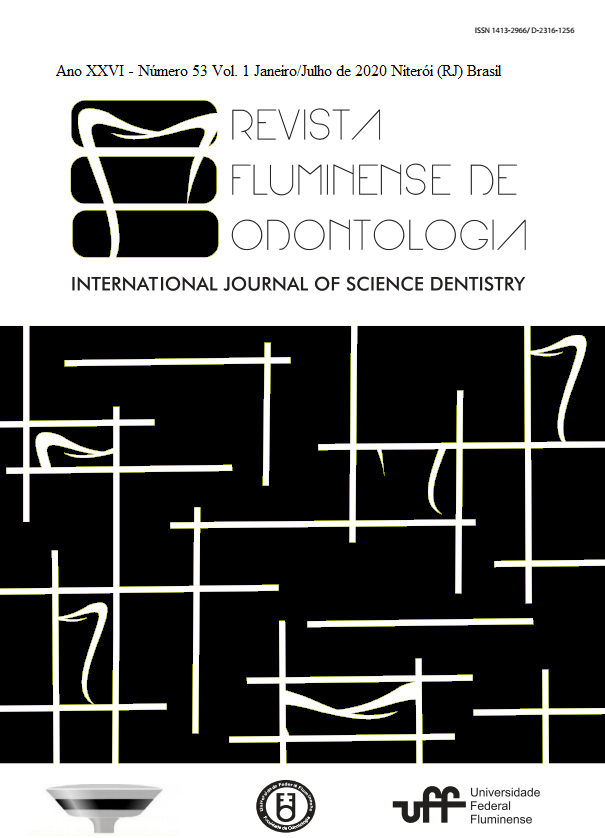ENXERTO AUTÓGENO EM BLOCO CORTICOMEDULAR EM MAXILA: RELATO DE CASO
DOI:
https://doi.org/10.22409/ijosd.v0i53.39869Resumo
Resumo
A instalação de implantes dentários osseointegráveis em regiões previamente enxertadas foi primeiramente descrita por Brånemark em 1975, e continua tendo sua indicação nos dias atuais, com altas taxas de sucesso. Apesar do crescimento dos biomateriais xenógenos e aloplásticos, os enxertos autógenos continuam sendo reconhecidos como “padrão ouro” dentro da Medicina e Odontologia. Isso se dá devido ao fato de ser o único enxerto com características de osseoindução, osseocondução e osteogênse. Dessa forma, geralmente, consegue-se ganho ósseo em altura e/ou espessura, permitindo a correção de defeitos ósseos verticais e/ou horizontais, para realizar a posterior reabilitação do paciente com implantes. Entre os sítios intra-orais doadores possíveis, podemos citar o ramo mandibular, mento e túber. O mento se destaca como área doadora por oferecer quantidade e qualidade ósseas, tanto cortical como medular, além de se apresentar com um ótimo acesso cirúrgico. O objetivo desse trabalho é relatar um caso clínico da paciente A.R.L.S, leucodema, sexo feminino, 56 anos de idade, que foi atendida na Clínica de Extensão em Dentes Inclusos e Cirurgia Oral da Faculdade de Odontologia da Universidade Federal Fluminense, para realização de enxerto autógeno na região anterior de maxila, para posterior instalação de implantes para reabilitação, utilizando a região de mento como doadora.
Palavras-chave: enxerto autógeno; implante osseointegrável; enxerto em bloco.
Abstract
The installation of osseointegrated dental implants in previously grafted regions was first described by Brånemark in 1975, and continues to be indicated today, with high success rates. Despite the growth of xenogen and alloplastic biomaterials, autogenous grafts continue to be recognized as the “gold standard” within medicine and dentistry. This is due to the fact that it is the only graft with characteristics of bone induction, bone conduction and osteogenesis. Thus, generally bone gain in height or thickness is achieved, allowing the correction of vertical or horizontal bone defects, for subsequent rehabilitation of the patient with implants. Possible donor intraoral sites include the mandible branch, mental symphysis and maxillary tuberosity. The mental symphysis stands out as a donor area because it offers bone quantity and quality, both cortical and medullary, and presents with excellent surgical access. The objective of the present study is to report a clinical case of a 56-year-old female patient, ARLS, leucoderma, who was seen at the Clinic of Extension in Teeth and Oral Surgery of Fluminense Federal University Dentistry School, to perform autogenous graft in the anterior region maxillary for later implantation for rehabilitation, using the mental symphysis region as a donor.
Key-words: autogenous graft; osseointegrated implant; block graft.


